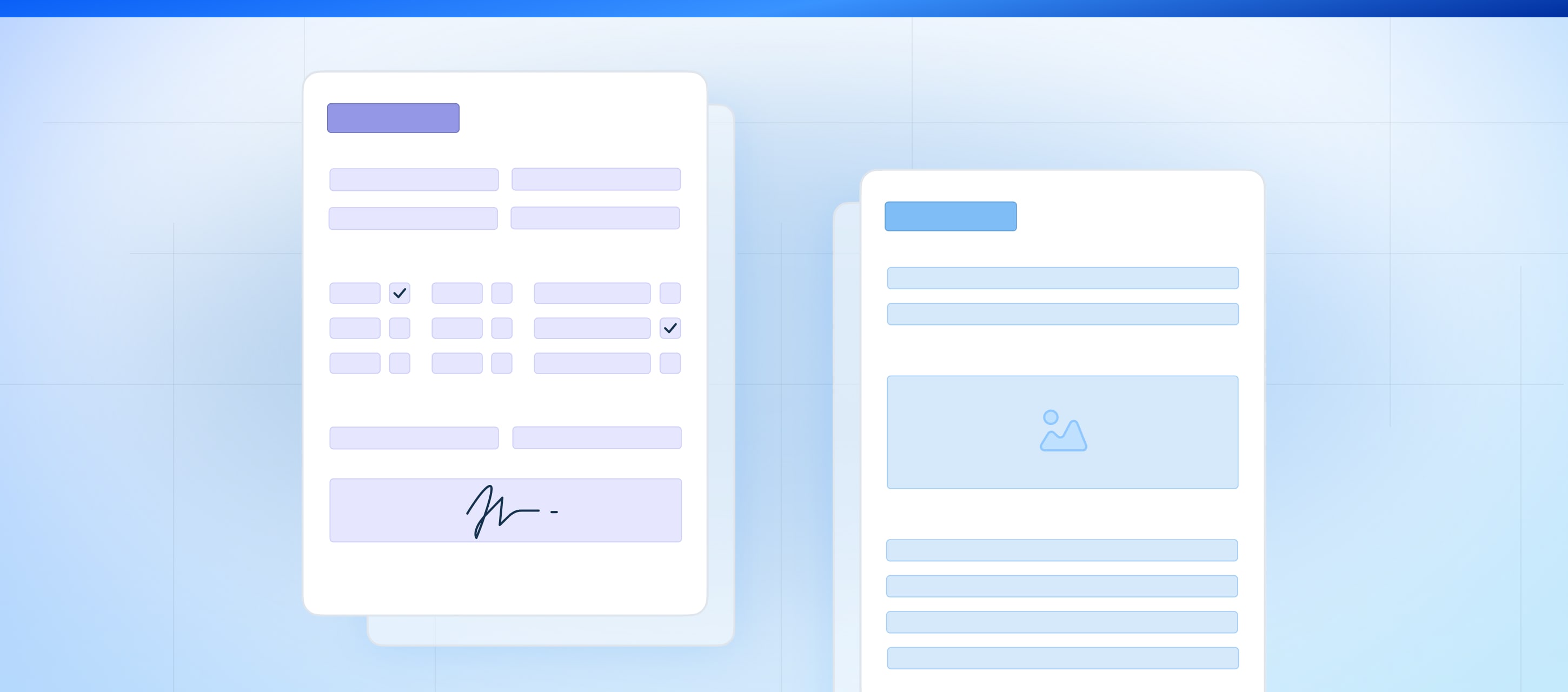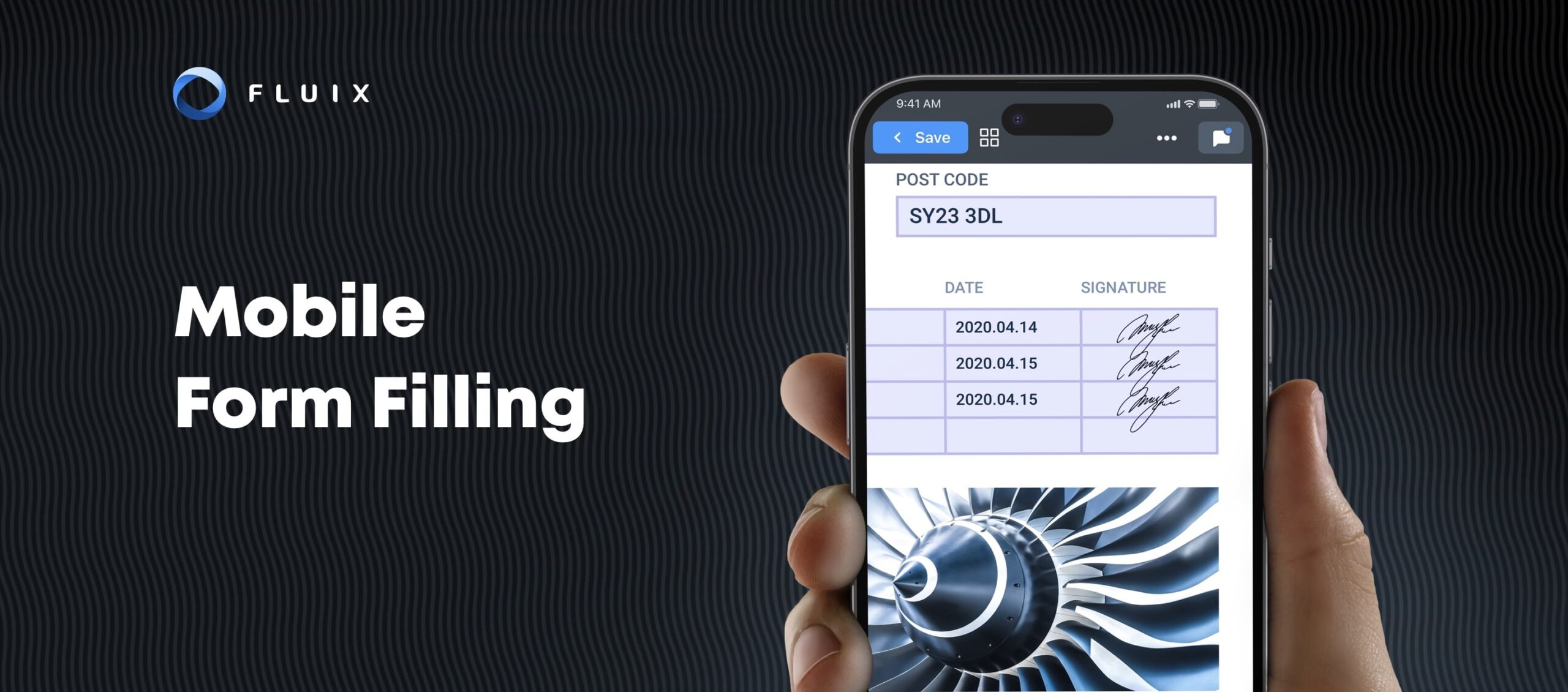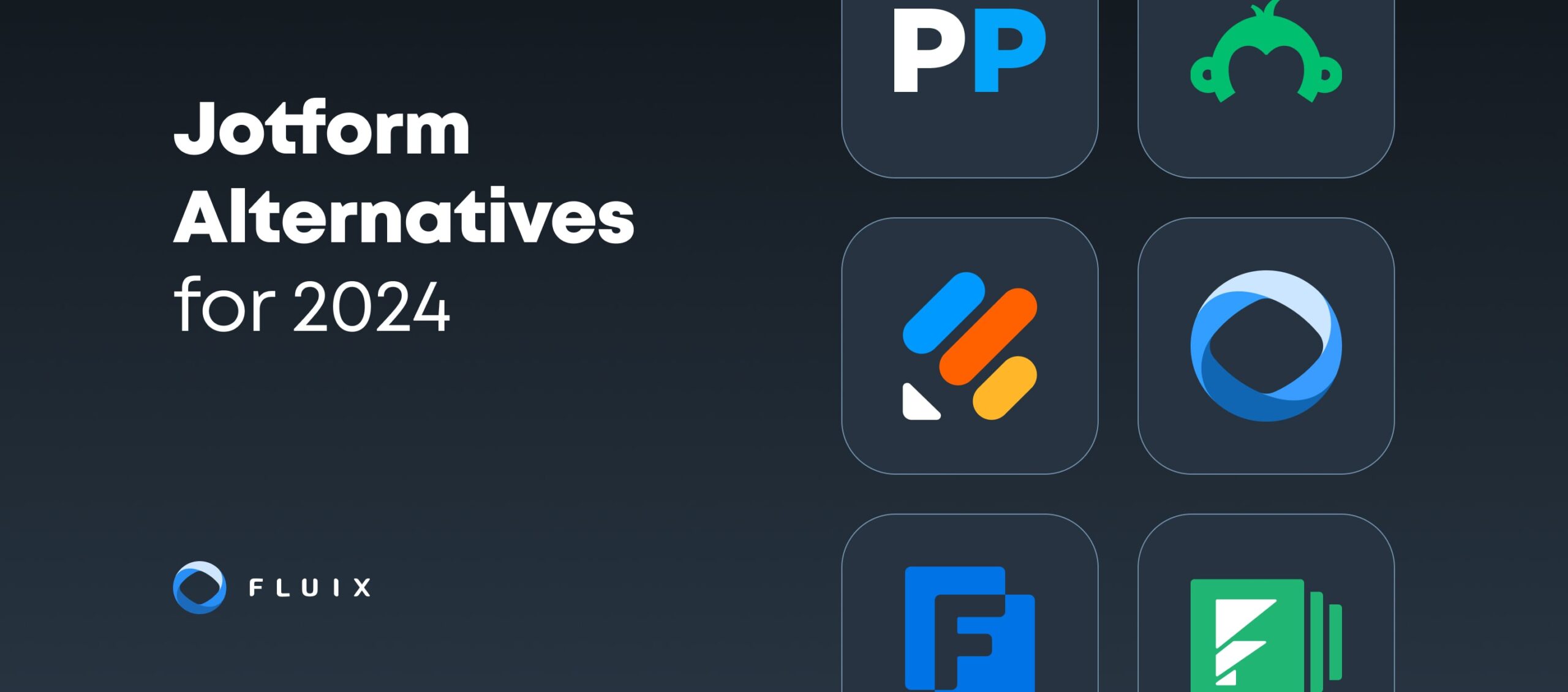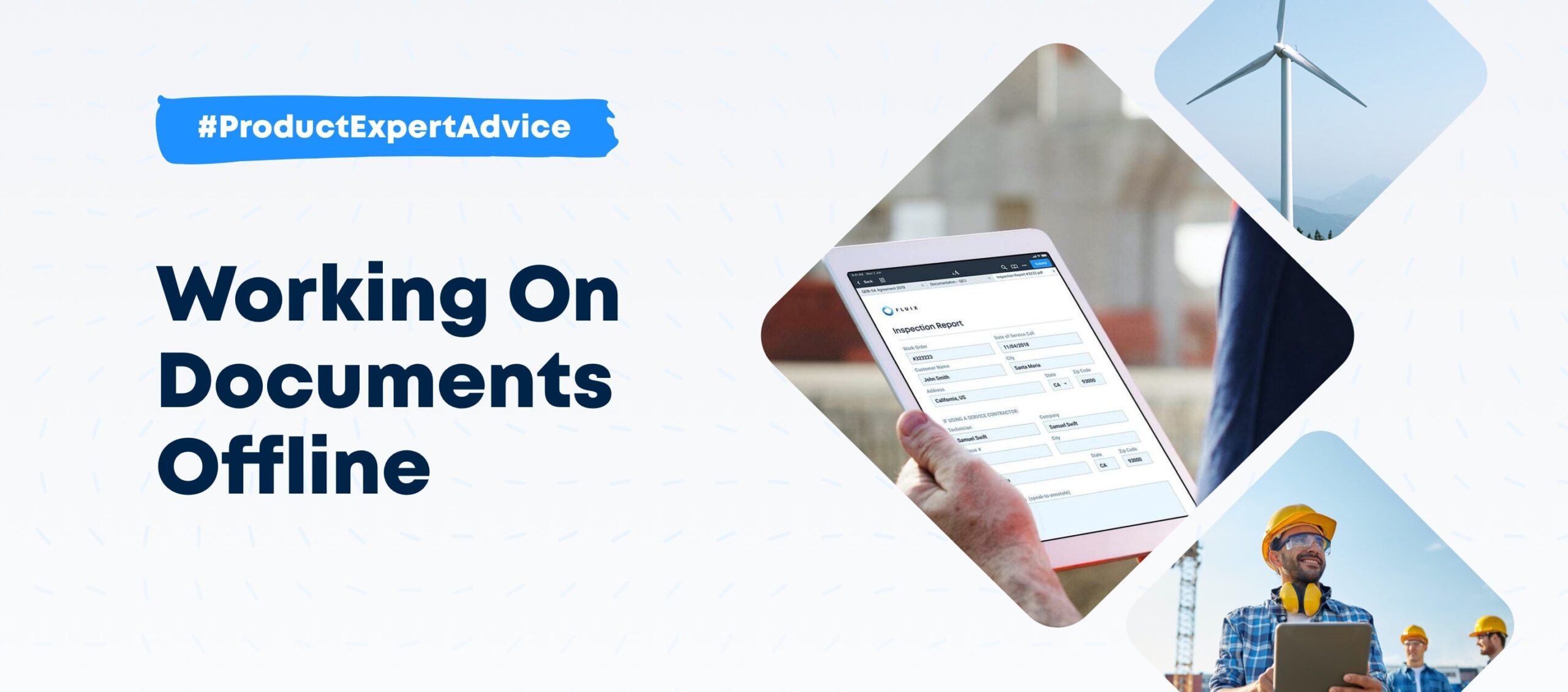Your efficiency and productivity depend much on the data collection tools you use, including the document format.
At Fluix, we offer you two primary digital document solutions: fillable PDFs and web forms. Each format has unique benefits and potential drawbacks, making the choice strategic for your needs.
Let’s have a look at the advantages and disadvantages of fillable PDFs and web forms, helping you make an informed decision that aligns with your form filling goals. As well as with regulatory demands.
Contents:
Understanding Fillable PDFs
A fillable PDF is a digital document that lets you input information directly into predefined fields. Unlike its static paper counterparts, digital PDFs are interactive. You can type text, select options from drop-down menus, check boxes, and even sign documents electronically.
Why would this format work for you?
PDFs are particularly useful in situations where maintaining a specific format and layout is crucial. Think about legal documents, financial forms, and contracts – they often need a consistent look and feel that fillable PDFs provide.
And if you submit your documents to different regulatory bodies, most probably they would want the information presented in an easy-to-review way.
Next, PDFs are intuitive and easy to use, which reduces the learning curve for your team. They look the same as paper across devices, so your workers know exactly what to do.
However, creating fillable PDFs (especially if you want them feature-rich) can be labor-intensive, and requires technical skills. You need licenses for Adobe Acrobat or other PDF builders and must know how to use these tools effectively.
Want to See How Digital Forms Work in Action?
Our team can show it during a personalized demo tour
PDF’s Pros and Cons
Here’s a quick overview of the main pros and cons to consider.
| Pros | Cons |
|---|---|
| Simple and understandable format for users | More time-consuming to create |
| Preserved design and layout | Require specific knowledge and licenses of third party tools (e.g. JavaScript, Adobe) to add dynamic fields and keep them updated |
| Standardized format across the company | Limited dynamic interactivity |
| Can be used in legally binding scenarios | No conditional logic |
| Can be feature-rich (with JavaScript, you can add different components, e.g. calculations) | Often require manual extraction or additional steps to integrate with other systems |
| Can be encrypted and password-protected | Сan be cumbersome to fill out, especially on mobile devices |
| You can add annotations and markups | |
| Print-ready and easily managed physically |
How the Format Works in Fluix
In Fluix, you can upload the PDFs you already have or create new ones from scratch using the Fluix form builder.
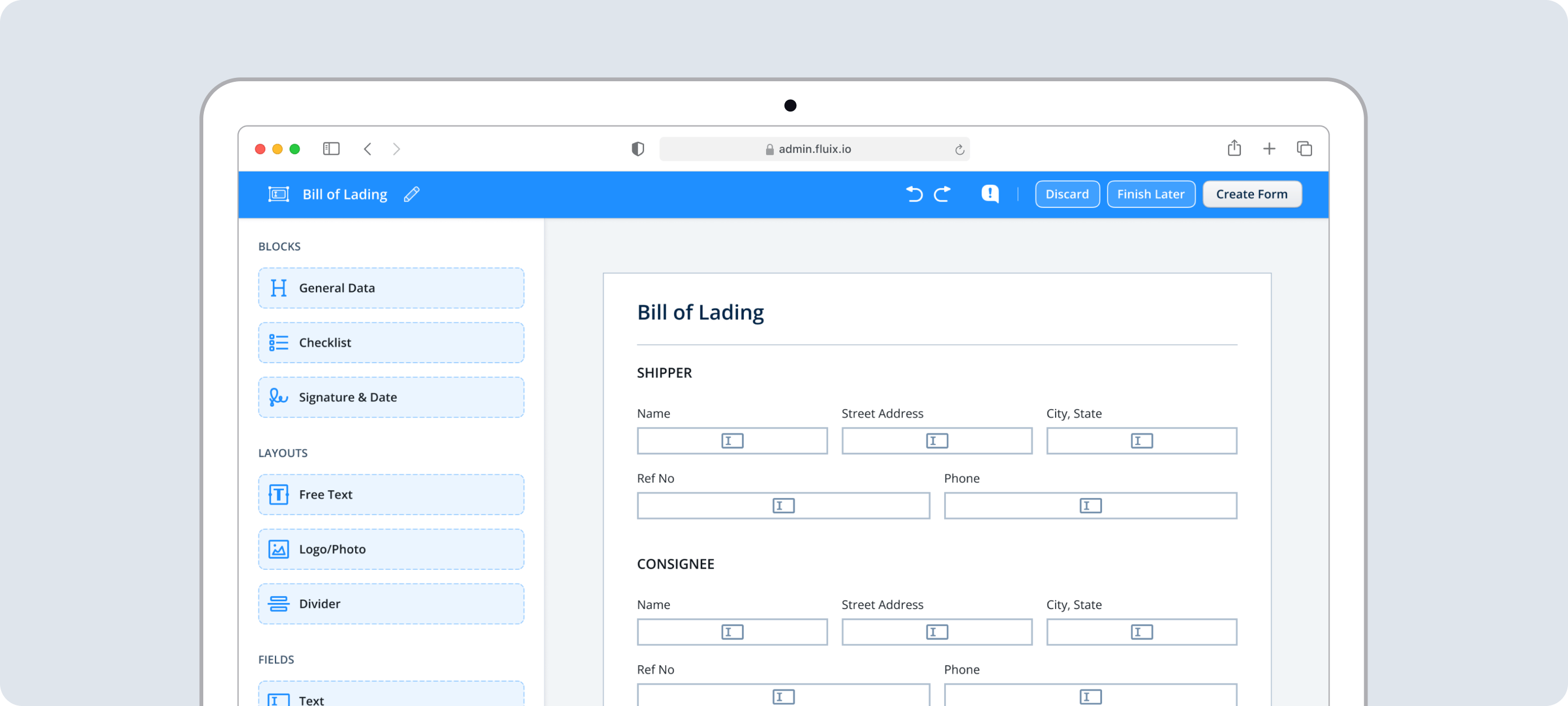
In the above image, you see an example of a fillable PDF within the Fluix admin platform. Its key characteristics include:
- Document layout: The form’s design mirrors your paper documents.
- Division into pages: The form is divided into pages, allowing for logical segmentation of information.
- Fluix builder: The left sidebar provides different blocks which you can use to build or customize your forms.
- Branding options: You can incorporate your company’s logo, colors, and fonts to ensure that every form aligns with your brand identity.
Read More Read More How RWE reduced daily form completion time by 45% using digital checklists and forms >
Understanding Web Forms
Web forms are interactive digital forms designed for data collection, accessible via an app and responsive to various screen sizes. They are beneficial if you need to fill out long documents that take dozens of pages, for example, reports or contracts.
The responsive design ensures that forms are easy to navigate and complete on any device, from smartphones to desktops.
Web Forms’ Pros and Cons
Here’s a quick overview of the main pros and cons to consider.
| Pros | Cons |
|---|---|
| Easy creation with no technical skill required | Can’t add JavaScript for form validation |
| No need to use the third-party software for creation | May result in a multi-page format that requires scrolling or navigating through multiple screens, potentially reducing the ease of viewing all information at once |
| Conditional logic can be used covering complex use cases depending on the options chosen | Can be challenging to maintain a specific design or layout per page due to a less rigid structure |
| More options for integrations with other systems | No annotations |
| Dynamic web forms adapt to the screen size and are more comfortable to fill out | May not comply with contract regulations and obligations |
| Multiple photos can be added in one field |
How the Format Works in Fluix
Web forms exist in Fluix in two formats: document format (the layout resembles the paper document) and dynamic format (the layout adopts to the screen size, and the form supports conditional logic).
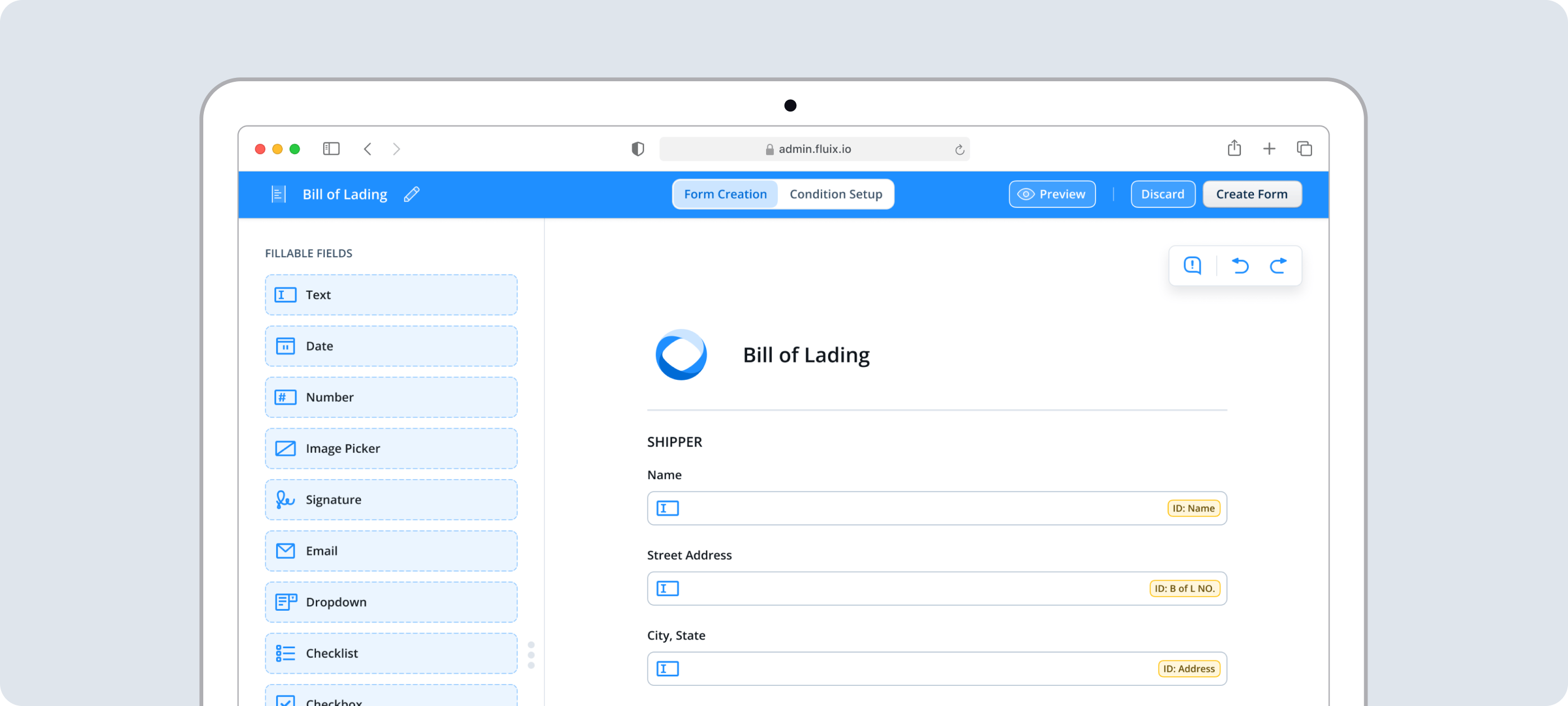
In the above image, you see an example of a dynamic web form within the Fluix admin platform. Its key characteristics include:
- Flexible layout: The form design is digital-first, optimized for screen use rather than mimicking paper documents.
- No division into pages: Unlike fillable PDFs, web forms have a single-page format that allows for continuous scrolling.
- Field positioning: Input fields go one under another.
- Condition setup: The top toolbar provides options for condition setup, allowing you to define conditional logic to handle complex use cases based on user inputs.
- Preview: You can preview the form to see how the form looks depending on the device.
Read More Read More How Fluix Dynamic Forms make data collection smarter and faster
How to Make the Right Choice
Choosing between fillable PDFs and web forms depends on your specific needs and goals.
Here’s a quick summary:
Use fillable PDFs for: Preserved document format and design, legally binding scenarios, and when you have an existing library of PDFs that meet your data collection needs. Ensure you have personnel with the necessary technical skills to manage these forms.
Use web forms for: Dynamic and faster data collection, ease of integration, and when you start with digitizing existing paper processes. Ideal for teams needing a more flexible, user-friendly solution.
Team up PDFs and web forms: To maximize the strengths of both formats, consider using them together. Start with web forms for initial data collection, then export the data to populate relevant fields in fillable PDFs. This approach ensures you have up-to-date documentation that’s easy to review, approve, and share with stakeholders
Sometimes, when you only get started with automation, each option may seem equally appealing to you. To better understand what you need, we suggest you first answer the following questions:
- What is the main purpose of your forms?
- Do you already have a library of PDFs that you need to continue using?
- What is your timeline for implementing forms?
- Do your team members have the skills to create and manage fillable PDFs?
- How comfortable is your team with using web forms?
- Do you need forms that can integrate with other systems in real-time?
Fluix’s team offers personalized consultations to help you choose the right format based on the answers and the requirements you may have. Our experts can assess them, demonstrate how both formats function within the platform, and provide onboarding assistance to ensure a smooth transition.
By making an informed choice, you can enhance your operational efficiency and productivity, ensuring your data management processes are robust and effective.

